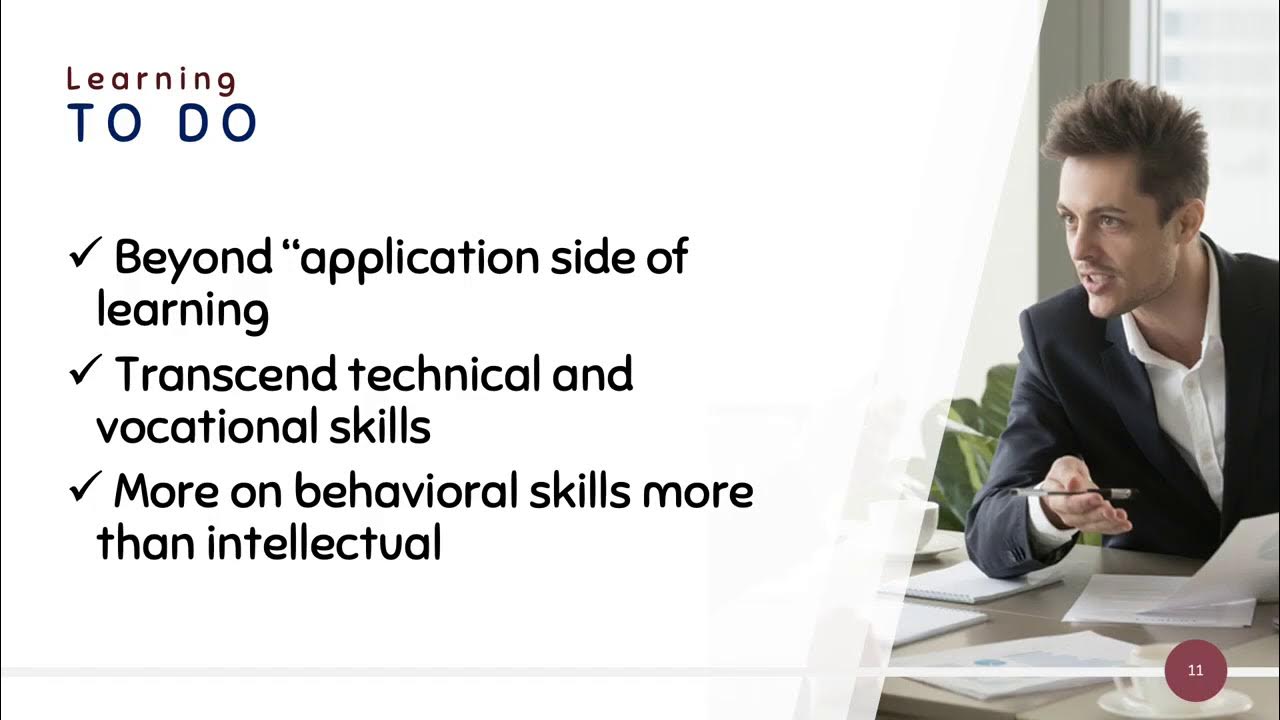MENGAPA PENTING TEORI BELAJAR?
Summary
TLDRThis video explores the essential concepts of constructivist learning theory and its practical applications in education. It highlights how educators can use this theory to understand student needs, design effective learning models, and select appropriate teaching methods and assessment techniques. Emphasizing active student engagement, the video advocates for project-based, problem-based, and task-based learning models. It also discusses the importance of process-oriented assessments, such as portfolios and performance evaluations, to accurately reflect student growth. Ultimately, the video aims to guide educators in fostering interactive, meaningful, and impactful learning experiences.
Takeaways
- 😀 Understanding Constructivism: The script introduces the concept of Constructivism as a learning theory, emphasizing its role in helping educators design effective learning experiences.
- 😀 Teacher's Role: Teachers, including prospective educators, are highlighted as facilitators, guides, and sources of knowledge in the learning process, especially when students face difficulties.
- 😀 Importance of Theory: Learning theories, such as Constructivism, help teachers identify students' characteristics, select appropriate teaching methods, and assess students effectively.
- 😀 Teacher's Guidance: Constructivism empowers teachers to provide the necessary guidance for students to build strong, long-lasting knowledge through active learning.
- 😀 Active Learning: The theory emphasizes student-centered learning models, encouraging active participation, problem-solving, and project-based activities.
- 😀 Assessment Techniques: Relevant assessment models, like portfolio assessments, performance-based assessments, and project evaluations, are essential in Constructivist learning environments.
- 😀 Long-term Retention: Constructivism aims to foster long-term memory retention, ensuring that students internalize knowledge over extended periods.
- 😀 Interaction in Learning: The relationship between the teacher and student is seen as a crucial interaction for meaningful learning, where both parties actively engage in the process.
- 😀 Constructivist Models: The script advocates for project-based, problem-based, and assignment-driven teaching models that encourage students to be more hands-on and engaged.
- 😀 Importance of Reflection: The theory suggests that learning processes should include continuous reflection, observation, and feedback, enabling students to improve their skills and knowledge over time.
Q & A
What is constructivism and why is it important in education?
-Constructivism is a learning theory that emphasizes active learning, where students build their understanding based on experiences and interactions. It is important in education because it encourages deep, long-lasting learning, making students active participants in their own education.
What are the four main reasons why constructivist theory is important for educators?
-The four main reasons are: (1) It helps educators analyze and understand students' characteristics, (2) It provides guidance in designing effective learning models, (3) It helps choose the right teaching methods and media, and (4) It guides the selection of appropriate assessment techniques.
How does constructivism assist teachers in understanding student characteristics?
-Constructivism helps teachers analyze the individual needs and learning styles of their students, allowing them to tailor their teaching strategies to fit diverse learner profiles.
What role do educators play in a constructivist learning environment?
-In a constructivist environment, educators act as facilitators, guides, and resources. Their role is to support and scaffold student learning by providing tools, guidance, and opportunities for self-directed exploration.
What are some common teaching methods used in constructivist classrooms?
-Some common teaching methods include project-based learning (PBL), problem-based learning (PBL), and task-based learning. These approaches encourage active engagement, collaboration, and real-world problem solving.
How does project-based learning align with constructivist theory?
-Project-based learning aligns with constructivism because it requires students to work on real-world projects, actively engaging in problem-solving and critical thinking. It fosters deep learning through hands-on, practical applications.
Why is process-based assessment important in a constructivist classroom?
-Process-based assessment is important because it evaluates students' learning progress over time rather than just final outcomes. This type of assessment is more reflective of the learning journey and helps teachers provide timely feedback.
What are some examples of process-based assessments used in constructivist classrooms?
-Examples of process-based assessments include portfolio assessments, performance-based assessments, and project evaluations. These assessments track students' development and reflect the skills and knowledge acquired during the learning process.
How does constructivism influence the selection of teaching media and methods?
-Constructivism helps teachers choose teaching media and methods that best support active learning. This might include multimedia resources, collaborative tools, and hands-on activities that engage students and support their learning through interaction and exploration.
How can constructivism enhance long-term retention of knowledge?
-By encouraging active, experiential learning, constructivism helps students build a deeper understanding of concepts. This process strengthens memory retention, making the knowledge more likely to be remembered in the long term.
Outlines

Esta sección está disponible solo para usuarios con suscripción. Por favor, mejora tu plan para acceder a esta parte.
Mejorar ahoraMindmap

Esta sección está disponible solo para usuarios con suscripción. Por favor, mejora tu plan para acceder a esta parte.
Mejorar ahoraKeywords

Esta sección está disponible solo para usuarios con suscripción. Por favor, mejora tu plan para acceder a esta parte.
Mejorar ahoraHighlights

Esta sección está disponible solo para usuarios con suscripción. Por favor, mejora tu plan para acceder a esta parte.
Mejorar ahoraTranscripts

Esta sección está disponible solo para usuarios con suscripción. Por favor, mejora tu plan para acceder a esta parte.
Mejorar ahoraVer Más Videos Relacionados

Teori Belajar Konstruktivistik

Video Pembelajaran Konstruktivistik & Behavioristik Pembelajaran IPS SD

Abordagem Construcionista, Contextualizada e Significativa CCS e Esclarecimento sobre o Plano de int

4 Pillars of Education

AI concepts and their relevance in education

Matematika Diskrit - Part 3 - Siklus, Sub Graf, Komponen, dan Varian Graf
5.0 / 5 (0 votes)
